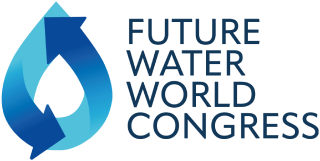Explore the relationship between corrosion control and water quality treatment processes
Limiting corrosion, scale and bacteria are challenges for drinking water operators. These issues continue to become more challenging in the face of new regulations, technologies, monitoring capabilities and public awareness. What has emerged is an acute focus on individual water quality parameters, often in isolation. At times, solving one problem introduces another. In the US, this issue is addressed in the upcoming lead / copper rule: “The water system must evaluate the effect of the chemicals used for corrosion control treatment on other drinking water quality treatment processes.” Join us for a live demonstration to explore the relationship between corrosion control and other water quality treatment processes.
Traditional corrosion control methods rely on adjusting pH and alkalinity to build mineral scale, composed of calcium carbonate, calcium phosphate or silica. Theoretically this could work if pipes are clean, and conditions are controlled. The EPA addresses this specifically: “Although barrier film would be convenient for important reasons, the CaCO3 hypothesis has not been proven and scale is overall more complex.” What actually happens is a mixed complex of heterogeneous deposits, comprised of several layers, containing both amorphous and crystalline structures. Lead corrodes, and orthophosphate is used to control the harmful byproducts (Pb+2) by reacting with them and becoming insoluble. The problem is most distribution systems are comprised of iron pipes containing tuberculation. Because the pipe is not clean, traditional methods of corrosion control (such as high levels of orthophosphate) do not actually reduce corrosion in non-lead materials. Because iron containing pipes continue to corrode, iron is released into the water from the distribution system. This iron reacts with oxidizers such as chlorine and becomes insoluble. This creates red water and reduces disinfection residuals.
In the US, high levels of ortho-phosphate are being used or considered by many water systems to provide acceptable lead control. The problem is that phosphorus is a scarce resource of which there is no substitute. An EPA study also concluded that as much as 35% of the phosphorus load on wastewater plants comes from using phosphorus for corrosion control in drinking water. A novel additive, SeaQuest, has been used successfully to reduce iron and lead corrosion while keeping any remaining iron soluble. As a result, oxidizer residuals are increased and red water complaints are reduced while using significantly less phosphorous.

